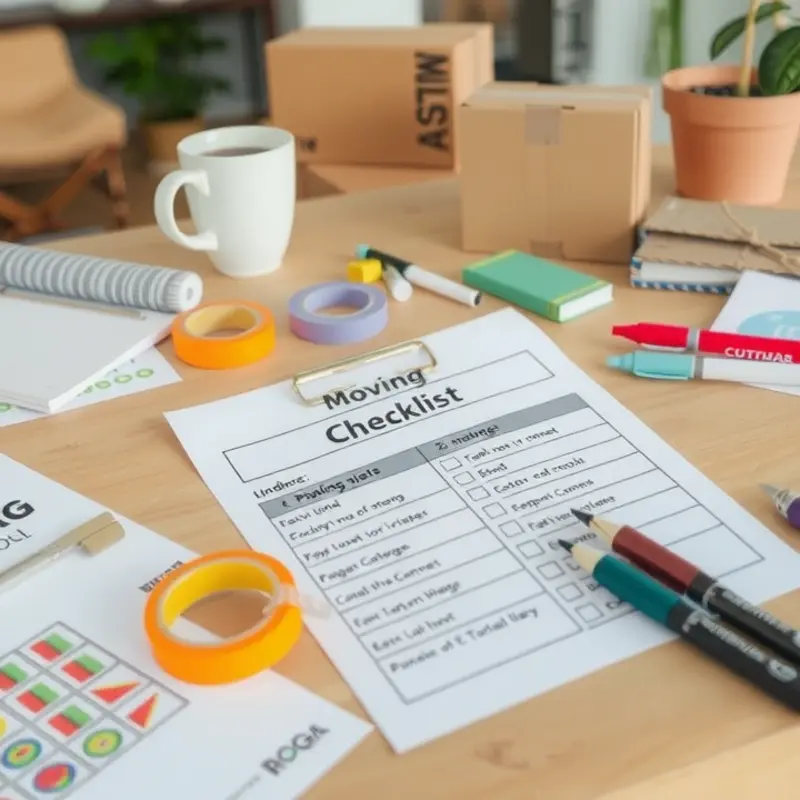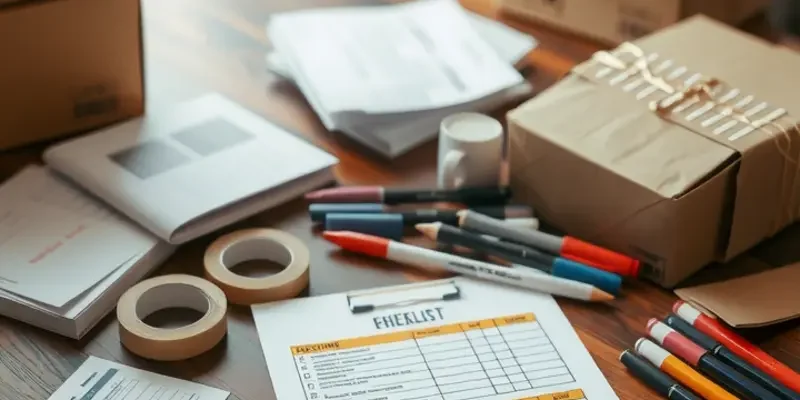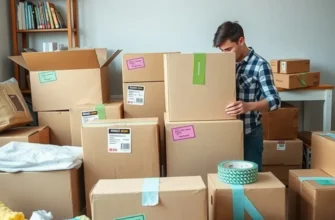Moving can sometimes feel like a daunting challenge, especially if you’re a first-time renter or a busy young professional juggling work and life. But, worry not! With a sprinkle of planning and maybe a dash of humor, your weekend move can be less of a chaos fest and more of a victory lap. Whether you’re a couple starting your journey together, a family expanding your horizons, or an ambitious young adult leaping into your next big chapter, this guide is designed to help you tackle your weekend move efficiently. From packing tips to coordination strategies, we’ll explore practical steps to take, helping you create a packing party vibe instead of a dreaded chore. So grab your favorite playlist, channel your inner organized guru, and let’s dive into planning a weekend move that you might even look back on fondly—once the dust settles, of course!
Preparing for the Big Move: Checklist to the Rescue

Starting your weekend move with a well-structured plan helps ensure everything goes smoothly. A detailed moving checklist is vital to stay organized throughout the process. Begin by listing tasks you must complete before, during, and after the move.
First, categorize these tasks. This could include sorting items, packing, arranging transportation, and updating your address. Structuring tasks into categories makes them more manageable and less overwhelming.
Next, gather necessary packing supplies. Essential items include sturdy boxes, packing tape, markers, and bubble wrap. Use eco-friendly materials if possible. Start collecting these supplies well in advance to avoid last-minute trips to the store.
Consider reducing clutter before you start packing. Go through each room and separate items into keep, donate, sell, and discard piles. Doing this beforehand not only helps reduce the volume of stuff you move but also gives you a fresh start in your new place.
Setting a realistic timeline is crucial in avoiding a rushed move. Begin planning several weeks ahead of your move date. Allocate enough time for each task, keeping in mind potential distractions or interruptions. A buffer for unexpected delays can prevent unnecessary stress.
Don’t forget the smaller details. Transition utilities such as water, electricity, and internet. Plan to have these activated before your arrival at the new location. Update your contact information with relevant postal services and subscriptions. This checklist can help keep you organized.
Identifying a schedule for the actual moving day streamlines activities. Know when movers or friends are arriving to help, pack crucial items that you’ll need on your first night in a separate box, and ensure all keys and access codes to the new place are ready.
Communicate with everyone involved in the move, whether it’s family members or professional movers. Make sure roles and tasks are clear to prevent any confusion. Keep contact numbers handy in case unexpected situations arise.
Finally, consider packing a “first-night” box. This box should include essential items such as toiletries, a change of clothes, bedding, and basic cookware. Keeping these items easily accessible can help you settle into your new home quickly without rummaging through countless boxes.
Creating a comprehensive moving checklist, gathering the right supplies, and establishing a timeline effectively diminishes the stress associated with moving. It allows you to focus on the excitement of a new beginning rather than the chaos of the transition.
The Art of Packing: Tips that Won’t Break the Bank (or Your Back)

Packing efficiently can transform a daunting move into a manageable task. Start by gathering your materials: sturdy boxes, packing tape, and bubble wrap or old newspapers. As you assemble your tools, remember there’s no need to invest in expensive supplies; reusing items you already have is both eco-friendly and cost-effective.
Prioritize Purging Before Packing
Before you pack, sort your belongings into ‘keep’, ‘donate’, and ‘toss’ piles. This step might seem time-consuming, but it pays off. By reducing unnecessary items, you’re not only saving space but also minimizing your moving burden. Consider this a fresh start, especially for those long-forgotten closet remnants.
Involve Everyone in the Family
Moving isn’t a solo mission. Engage every person in your household. Assign age-appropriate tasks to your kids. This instills responsibility and makes the process fun! Partner with your spouse to tackle room-specific tasks. For instance, while you focus on delicate kitchenware, your partner can handle the closet. This division of labor ensures efficiency and no one gets overwhelmed.
Be Mindful of Packing Techniques
When arranging items, keep weight distribution in mind. Place heavier items at the bottom of boxes and lighter things on top. For clothes, roll them instead of folding to save space. Fragile items should be wrapped with care—an extra layer of clothing can cushion them, saving you the need for excessive bubble wrap. Always label your boxes not just by room but by content. This makes unpacking as straightforward as packing.
Optimize What You Pack
Consider multifunctional packing strategies. Suitcases can hold more than clothes; use them for books or heavy items, as they have wheels for easy transport. Garbage bags can protect hanging clothes, with just a knot at the top. This DIY garment bag retains their arrangement, ending up in your new closet as organized as they left.
For those who lack storage space, consider strategies from an apartment organization guide. Using baskets or modular storage can significantly simplify the packing process by categorizing and compartmentalizing items.
Involve Creativity Without Breaking the Bank
You don’t need to splurge for innovation. Recycle newspapers to wrap fragile items, and use larger pieces of soft clothing or towels to protect delicate pieces. This method not only saves money but aligns with sustainable practices, reducing waste.
Packing as an art involves both technique and strategy, transforming it from a tedious task to an engaging and systematic process. Remember, involving all household members doesn’t just lighten your load—it’s a valuable opportunity to bond and set the stage for memories in your new space. Whether you’re gearing up with recycled boxes or delegating tasks to your family, approach each step of packing with creativity and collaboration.
Final words
With a solid plan laid out, tackling your weekend move can feel much more manageable—and maybe even enjoyable! Whether you’re tackling it solo or with family and friends, the key lies in preparation, organization, and maybe a slice of pizza to keep spirits high. Remember, it’s not just about relocating your stuff; it’s about starting a new chapter in a place that will soon feel like home. And who knows? You might just create some lasting memories in the process.









